 Petzlover
Petzlover Renascence Bulldogge is originated from United States but Spitz is originated from Russia. Renascence Bulldogge may grow 14 cm / 5 inches shorter than Spitz. Both Renascence Bulldogge and Spitz are having almost same weight. Both Renascence Bulldogge and Spitz has almost same life span. Renascence Bulldogge may have less litter size than Spitz. Renascence Bulldogge requires Low Maintenance. But Spitz requires Moderate Maintenance
Renascence Bulldogge is originated from United States but Spitz is originated from Russia. Renascence Bulldogge may grow 14 cm / 5 inches shorter than Spitz. Both Renascence Bulldogge and Spitz are having almost same weight. Both Renascence Bulldogge and Spitz has almost same life span. Renascence Bulldogge may have less litter size than Spitz. Renascence Bulldogge requires Low Maintenance. But Spitz requires Moderate Maintenance
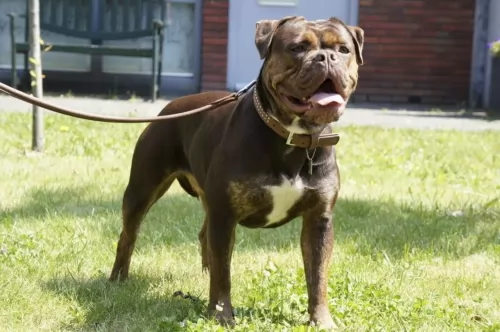 The Renascence Bulldogge, sometimes referred to as the Gargoyle – or Guardian bulldogs, came about by crossing the American Bulldogs with Bullmastiffs, Bandogges, English Bulldogs and Hermes Bulldogges.
The Renascence Bulldogge, sometimes referred to as the Gargoyle – or Guardian bulldogs, came about by crossing the American Bulldogs with Bullmastiffs, Bandogges, English Bulldogs and Hermes Bulldogges.
The idea was to re-create the working British Bulldogge breed of the 1800's. The Renascence Bulldogge is bred to a standard and is a rare dog. The idea was to bring about a dog like the English Bulldog but with less health problems.
There is a Renascence Bulldogge Kennel Club in existence.
 A spitz is not a breed of dog, but rather a “group or family” of dogs that has its roots in Germany. Within this family there are a variety of breeds that were bred for very specific purposes by people in many different parts of the world. The spitz family can be toy dog size up to vey large. Examples run from the Pomeranian to the Canadian Eskimo Dog.
A spitz is not a breed of dog, but rather a “group or family” of dogs that has its roots in Germany. Within this family there are a variety of breeds that were bred for very specific purposes by people in many different parts of the world. The spitz family can be toy dog size up to vey large. Examples run from the Pomeranian to the Canadian Eskimo Dog.
The Spitz family dogs share the look of thick, long fur and pointed muzzles, ears and curly tail. Despite their German name, they are thought to originally be of East Asia or Artic descent. Most of today’s spitz are from Siberia’s Artic region, first described in 1788 and in English in 1792. Spitz have been bred for three types of jobs depending upon where they were developed. These jobs included pulling, herding and hunting.
There are very powerful and large Spitz breeds that pull or hunt large game. Examples of these breeds are the Swedish Elkhound, the Akita Inu, the Norwegian Elkhound and the Karelian Bear Dog. The smaller sized breeds like the Samoyed hunted small mammals and birds, while the Finnish Lapphund, Lapponian Herder, and Swedish Lapphund herded, hunted and pulled small sleds.
The three largest spitz also pulled sleds throughout the 17th and 18th centuries. In most places the Canadian Eskimo Dog, the Alakan Malamute and the Greenland dog were used in sled racing and fur trapping while in Canada and Alaska the Siberian Husky was used for the same things.
Recently there have been genetic tests that show a large number of dogs that are considered Spitz type so share many strong ancestral ties and DNA similarities with wild wolves. It is now believed that a lot of these breeds were intentionally mated with wolves and some were accidental. Both domestic and wild dogs are included in this history.
Most spitz are made for cold weather, even today’s lapdogs, like the Pomeranian, do not do well in hot climates.
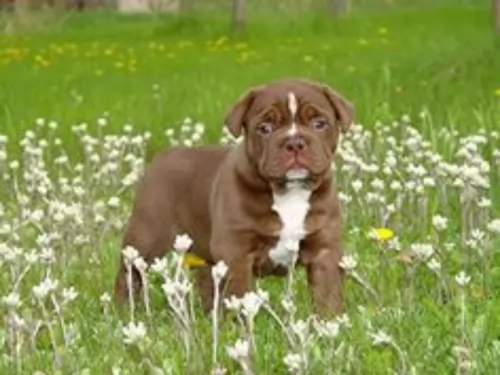 The Renascence Bulldogge is a well proportioned, muscular, medium sized dog with a large head and strong neck.
The Renascence Bulldogge is a well proportioned, muscular, medium sized dog with a large head and strong neck.
He can weigh between 27 to 41 kilograms and stand at between 43 and 56cm. A dock tailed is the preferred look, giving the dog a nice compact, distinguished look, but these days the tail is left to grow long. The coat is short and smooth and the colors are fawn, white and black. The eyes of the dog are low and wide, the muzzle broad and the ears are high set and semi-erect, semi-floppy. The back legs are muscular and heavy, quite a bit longer than the front legs.
Protective and territorial, the Renascence Bulldogge happens to also be a friendly, social, playful dog wih his human family. He tends to be a bit reserved and wary around strangers.
This powerful Molosser is also easy to train, and with training and socialization he becomes a pleasure to have around – obedient and well mannered.
 Most of the spitz breeds share a “look” that includes erect ears, stocky heavy, usually double coats, a pointed muzzle, thick, fluffy ruffs and a heavy curled tail carried high over the body. Build for northern climates they are insulated by a undercoat that is waterproof and dense and a less dense topcoat. Their ears are small to prevent frostbite and their paws have thick fur to protect them in the frigid, icy terrain.
Most of the spitz breeds share a “look” that includes erect ears, stocky heavy, usually double coats, a pointed muzzle, thick, fluffy ruffs and a heavy curled tail carried high over the body. Build for northern climates they are insulated by a undercoat that is waterproof and dense and a less dense topcoat. Their ears are small to prevent frostbite and their paws have thick fur to protect them in the frigid, icy terrain.
Many still have wolf-like looks and tendencies. Some are very difficult to train to be companions – the Akita, Chow and especially the Karelian Bear Dog – fall into this category. Many mixed breed dogs are also considered members of the Spitz family. These dogs are easy to recognize as spitz because of these physical characteristics
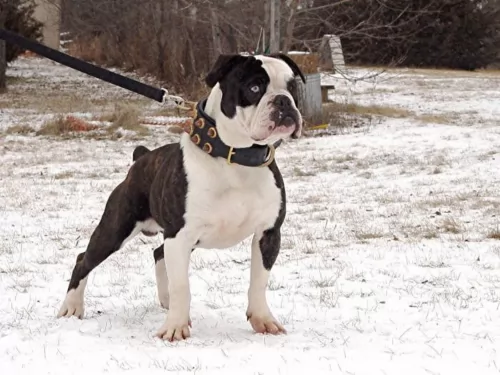 The Renascence Bulldogge is a rare dog and they are now being bred more often by people who love the English Bulldog but who don't want so many health problems.
The Renascence Bulldogge is a rare dog and they are now being bred more often by people who love the English Bulldog but who don't want so many health problems.
The Renaissance Bulldog is a lot more healthier and more robust than the English Bulldog. The best part is that he has the English Bulldog's characteristic look. Bring him into your home and you’ll have an entertaining, social, playful, loving pet and companion.
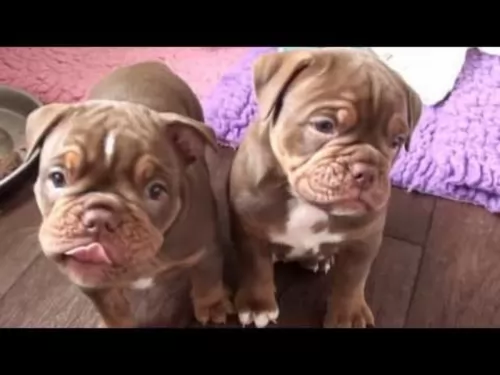 Your Renascence Bulldogge can live to be anything from 10 to 15 years of age with good care.
Your Renascence Bulldogge can live to be anything from 10 to 15 years of age with good care.
Heat stroke is a concern with the Renascence Bulldogge, and even with his daily walk, you will have to keep an eye on him You must never ever leave him alone in a hot car. These dogs have breathing problems as it is and overheating can kill him.Suffering from heatstroke is regarded as an emergency situation.
Any dog can suffer with bloat, not only the Renascence Bulldog. If your dog’s stomach is bloated, he will have a hard, swollen stomach, he will be restless and trying to vomit. This is also a life threatening condition.
Also referred to as canine atopic dermatitis, the Renascence Bulldog sometimes has to contend with this non-parasitic infection. Your poor dog will have dry, itchy skin and he can become frantic with this. You will need to get him to the vet.
Other things to look out for with your Bulldogge are hip dysplasia, cancer and eye infections.
 It is a little harder to characterize the health issues of a family of dogs than it is a .will overheat in hot climates due to their double coats. Here are some propensities of dogs in the Spitz family.
It is a little harder to characterize the health issues of a family of dogs than it is a .will overheat in hot climates due to their double coats. Here are some propensities of dogs in the Spitz family.
• Thrombopathia bleeding disorder with the risk of a hemorrhage, platets don’t clot.
• Larger breeds are affected by Elbow and Hip dysplasia that can cause arthritis and lameness.
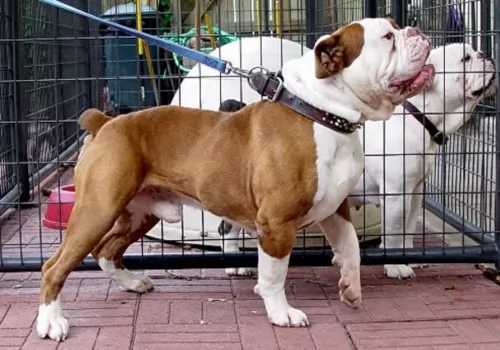 Your Renascence Bulldogge is a special, loving pet, but keeping him healthy can be a bit of a challenge.
Your Renascence Bulldogge is a special, loving pet, but keeping him healthy can be a bit of a challenge.
A walk every day will be a good form of exercise for this dog.
Your pet is one of these dogs that has quite a few layers around the face.You will need to wipe between these folds with a damp,warm cloth or with a natural,gentle anti-fungal wipe.
His skin can become irritated with the layers of skin and you don’t want such a cute pet to battle with a itchy rash on his skin.
Your Renascence Bulldogge is going to need the very best food you can give him. The commercially manufactured foods are nice and convenient and the best ones are well balanced.
It’s nice to be able to give your Bulldogge some delicious home-made food, bearing in mind that dogs like simplicity and consistency.
Boiled chicken, brown rice or pasta and sweet potatoes, spinach and carrots all chopped up and added to your dog’s dry kibble twice a week will delight him. It will ensure he is healthy ad happy. A little bit of raw meat can also do wonders for his health. Never leave him without a constant supply of fresh, cool water.
 1Feeding the puppy The Spitz family has high energy needs but in a slow-release so they need protein more than grain. Puppies should be fed 3-4x a day in small meals. Don’t overfeed them.
1Feeding the puppy The Spitz family has high energy needs but in a slow-release so they need protein more than grain. Puppies should be fed 3-4x a day in small meals. Don’t overfeed them.
2.Feeding the adult – The Spitz type dog stores their energy to use in extended periods when working or playing. They will become obese if overfed or if they don’t get enough exercise. Feed 2-3X a day in small or medium sized meals, even the larger breeds because of their storage of calories.
4. Games and Exercises – Having been bred for endurance and stamina most Spritz breed need plenty of exercise, lots of space and lots of play. They love to run, jog, or play games. They are outdoors types who love to hike, and run or walk for long times over long distances. They are great in cold, wet weather but not so good in the heat. How much exercise they need depends on the size and history of the specific breeds. Most love to play with other dogs, so dog parks and dog day care can both be good choices for most of them. Agility, barnhunt, field trials, pulling games are all good choices.